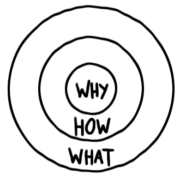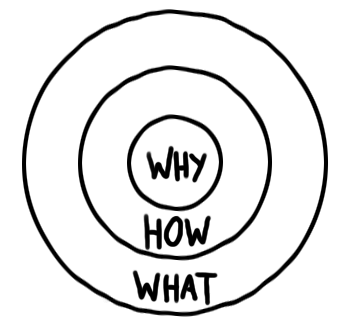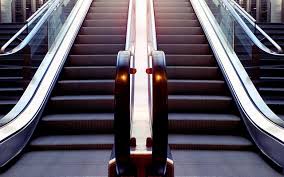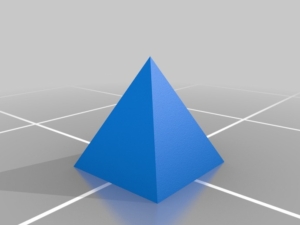The Future of Physical Conditioning for Tennis
A few weeks ago I took part in another webinar around physical conditioning for Tennis players – ”The Golden Circle of Physical Development- The Why, How & what.” The webinar was hosted by Dario Novak, and featured Ruben Neyens who spoke about young athletes at the U14 level. The webinar explored ways to bridge the gap between sports science (Why & How) and the practical on-court implementation (What) of physical training.
–>Follow @darionovak_ph.d (Dr. Dario Novak)
–>Follow @ruben.neyens (Ruben Neyens)
I was interested to hear this coach speak as I was always interested in his exercise selection, and the drills he uses with his tennis players. Today I wanted to share a few of his insights that resonated with me from the talk and perhaps share some other pieces of information.
Firstly, this talk was intended for the development of 14U players, however, other age groups would benefit from these pearls of wisdom.
The talk built a case for the Golden circle, I believe the book it came from was “Start with why” In this case;
- Why = Reason and value of physical conditioning
- How = Method and plan
- What = Activity and coaching
Broken escalator problem
Unfortunately, I could not find the commercial on the internet. But, I was shown a clip of two people on an escalator, the escalator stopped working and rather than just walking the remainder of the journey, the users stood there in confusion. This led to some provocative and open ended questioning by Ruben.
“Do you the see the problem?”
“When you do find the problem, are you going to be the one that solves it?”
This boils down to a couple of key things. Understanding the demands of Tennis and the individual in front of you. With regards to the demands a colleague of mine referred to something called “performance backwards” which seemed to stick. This will lead us nicely on to the next topic.
Demands of Tennis (Reason & Value)
I am going to split this section up into two sections as the first section was interesting.
- General demands
Tennis (unless playing doubles) is an individual sport and also a fairly silent game. Well, what does this mean? It means that not only do players have to demonstrate problem solving abilities, they have to demonstrate high energy/intensity without the quarrying motivation from their coaches. Ruben honourably said as a young coach “He would shout at the players to augment energy within a session.”
This was interesting and reading some of Dan John’s work showing the importance of creating the right synergy between Physical tension, Heart rate and arousal level, an imbalance of this synergy can throw off performance.
The length of a Tennis game is often dictated by the score, highlighting its unpredictability. It was mentioned that Ruben tends to try and replicate this by creating some unpredictability in the length of his training sessions. I was scratching my head around this, in the real world this sounds like a logistical nightmare. However, I also know some coaches like to use “Trading conditioning”. This is creating a scenario where there is unpredictability how many repetitions are performed of a particular conditioning drill, athletes remain clueless and you keep performing the task until told to stop.
From a perception-action standpoint players are reacting to “visual cues” which I see Ruben complimenting, by using lights and various visual aids for his reactive based speed work.
- Physical demands
In this section I am not going to mention all of the physical demands I currently know, just the ones that stood out to me. Last year I wrote an article on “demands of the game” but I wanted to add to it by mentioning a few key points.
- Average 3-5 changes of direction per point
- Average 800 changes of direction per match
What I admired about this talk is Ruben is so honest with his mistakes, he mentioned that when he reflected on his programming he was training his players for long rallies (not the intention) which was not reflective of the game.
Stop start cycle
Tennis is characterised by what he called a “stop start cycle”. Where players have to start, move, hit & recover. Along with the locomotive demands players have to be able to orient their bodies well whilst maintaining balance, highlighting the need to control their bodies in order to hit the ball effectively.
Why do we need physical training?
So a question was asked. “Why do we need physical training on top of tennis training?” These four overarching topics were brought forward.
- Fundamentals – Teaching fundamentals of good movement
- Performance – Enhancing performance
- Prevention – Injury prevention/keeping athletes healthy
- Variation– Keeping training interesting and varied.
I don’t think I need to go into any of these topics in too much detail however, I quite liked the point he made about variation and providing a nice change (from tennis training) for young athletes.
How do you implement physical training
Building the Layers
Firstly, it’s determining what you want to work on, “what is my goal?” I particularly enjoyed this section because it succinctly connects the training puzzle. I have always believed that the art of programming is not the individual training units, rather how it fits together in the big picture you are trying to paint.
| Coordination | Speed | Strength | Endurance | Mobility |
At APA we refer to these fitness components as the 5 S’s- skill, speed, strength, stamina and suppleness.
It was mentioned that you may work on a number of these in a session however this is best delivered as a “starter” & a “main dish” where the main dish is the prolific quality and the “starter” may include other training qualities in smaller amounts. For example, the use of “Movement breaks” within a session.
From the qualities we are trying to develop, comes the delivery and the organisation of exercises, “Are we trying to learn, develop or perform the skill?”
| Learn |
| Develop |
| Perform |
This just follows a systematic progression of exercises. When we learn an exercise/skill we slow it down and reduce its complexity. As we develop a skill we may increase spatial and temporal pressure. Finally, there is performing the skill with added pressure, complexity and competition. But, the question is; “Does the skill survive?”
Types of physical training
I am paraphrasing here but Ruben suggests that “The role of the physical trainer is to develop the physical qualities, not correct technique around tennis skills.”
This section refers to the degree of specificity. Is training, general, orientated, integrated or specific? Where orientated training may look like a footwork drill using a tennis ball “bounce and catch” to mimic the stop-start cycle or specific training where there is the use of a Racket and Tennis ball. An example of integrated training is using medicine balls throws preceding hitting ground strokes.
| General |
| Orientated |
| Integrated |
| Specific |
The 3-D model
This creates a 3-D model of training, and it is something I am going to reflect on in my training. Having drills where there is clearer system and intention on the type and intensity of exercises/drills, these can then be selected at certain times.
| Learn | Develop | Perform | ||
| General | Integrated | Specific | ||
| Coordination | Mobility | Strength | Endurance | Speed |
This was a great presentation with many more points however, I wanted to highlight the aforementioned points in particular. I hope you learn from the work of Ruben, I certainly did.
Do you feel that this would be a perfect time to work on the weak links that you have been avoiding? The things that you know you should be doing that you keep putting off? Would you like us to help you with movement screening and an injury prevention program? Then click on the link below and let us help you!
 TRAIN WITH APA
TRAIN WITH APA 
Aspiring Pro Training Support Packages
Follow me on instagram @konrad_mcken
Follow Daz on instagram @apacoachdaz
- If you’re not subscribed yet, click here to get free email updates, so we can stay in touch.
- Share this post using the buttons on the top and bottom of the post. As one of this blog’s first readers, I’m not just hoping you’ll tell your friends about it. I’m counting on it.
- Leave a comment, telling me where you’re struggling and how I can help
Since you’re here…
…we have a small favor to ask. APA aim to bring you compelling content from the world of sports science and coaching. We are devoted to making athletes fitter, faster and stronger so they can excel in sport. Please take a moment to share the articles on social media, engage the authors with questions and comments below, and link to articles when appropriate if you have a blog or participate on forums of related topics. — APA TEAM





